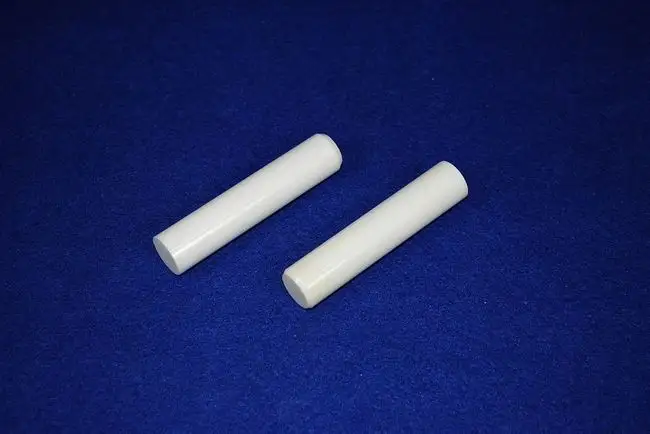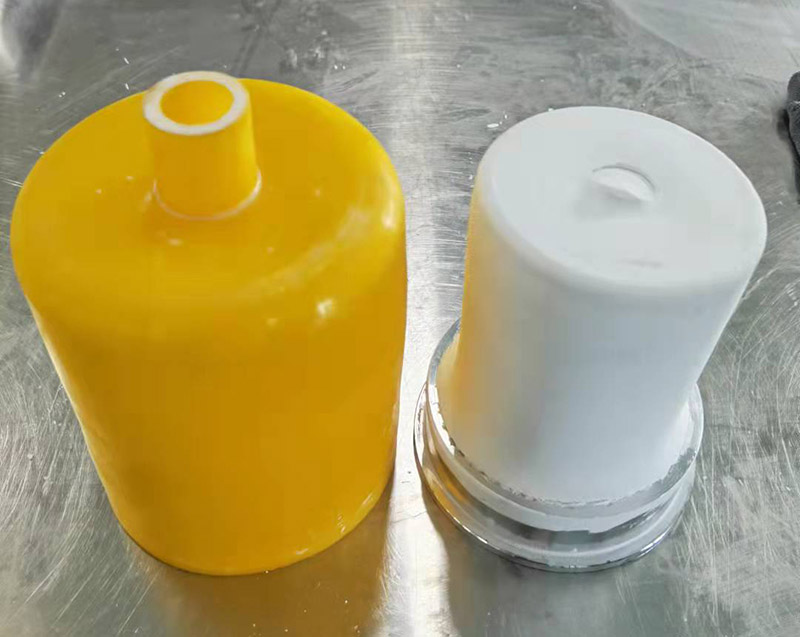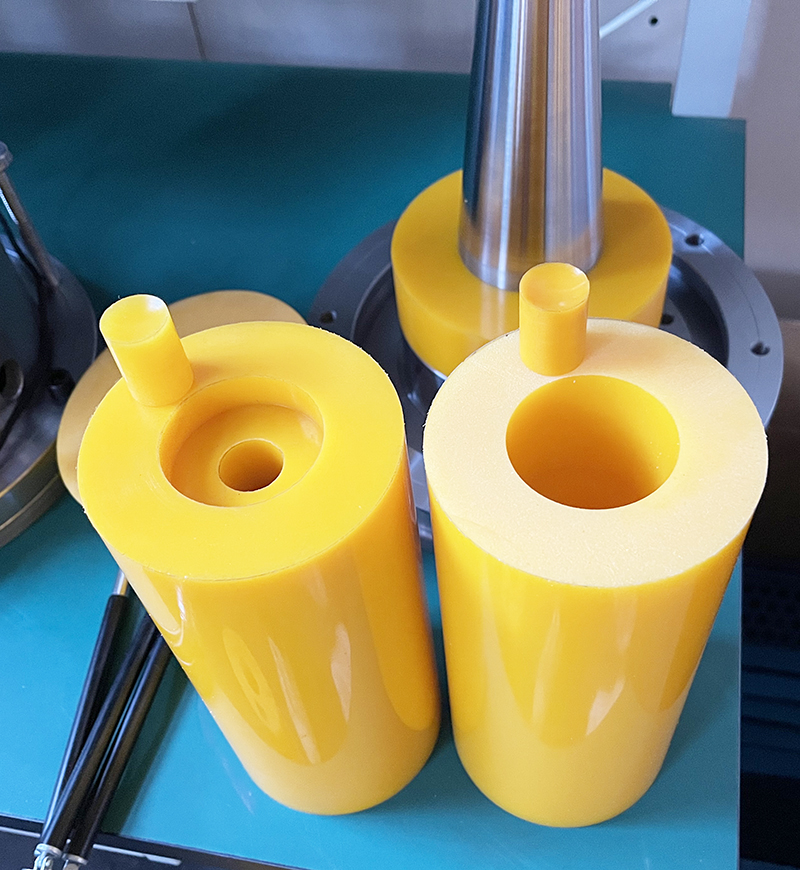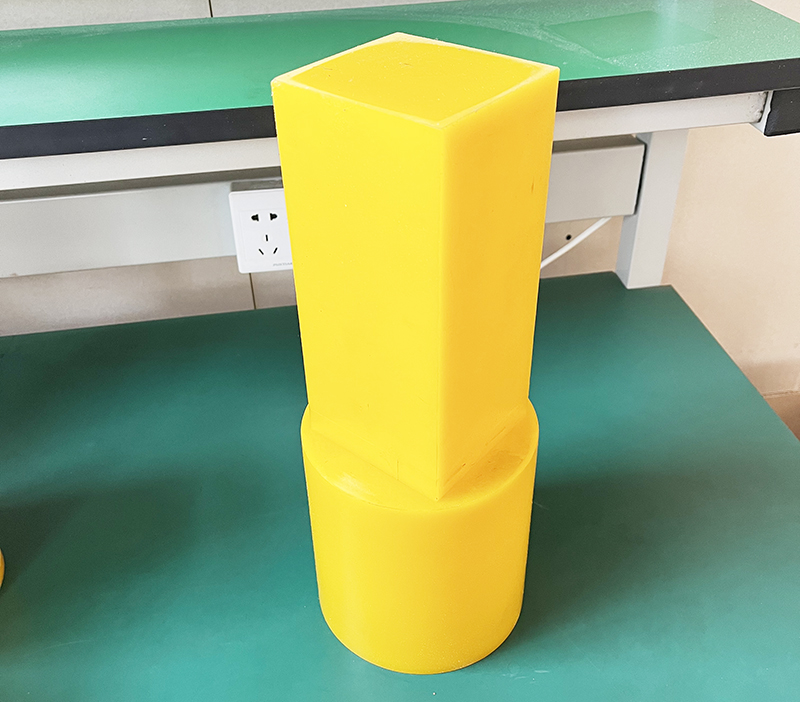

Advanced Ceramic Forming Technology
1. Dry pressing
Dry pressing is mainly to put the powder into the metal mold and compress it under the action of force, the gas in the gap in the billet is partially discharged, the particles are displaced, gradually approached, and tightly occluded with each other, and finally the cross section is the same as the mold cross section. The shape of the upper and lower sides is determined by the upper and lower pressure heads of the mold. The size of the pores in the molded body is significantly smaller, the number is greatly reduced, the density is significantly increased, and it has a certain strength.
Conventional dry press molding methods include one-way pressurization, two-way pressurization (two-way pressurization at the same time, two-way pressurization separately), four-way pressurization, etc.
The main advantages of dry pressing are high production efficiency, high repeatability, short production cycle, simple and convenient operation, high density and high strength of the produced products, which are suitable for mass industrial production;
Its main disadvantages are that there are relatively large restrictions on the shape of the molded product, high mold cost, low strength of the molded body, inconsistent internal compactness of the complex body, and relatively poor uniformity of the organizational structure.
2. Isostatic pressing
Isostatic pressing is to place the sample to be pressed in a high-pressure container, and use the incompressible properties of the liquid medium and the properties of uniform pressure transmission to uniformly pressurize the sample from all directions. When the liquid medium is injected into the pressure vessel through the pressure pump , according to the principles of fluid mechanics, its pressure is constant and uniformly transmitted to all directions. At this time, the pressure on the powder in the high-pressure container is uniform and consistent in all directions.
Isostatic pressing molding is the most common advanced ceramic molding process for barren materials. It is the most widely used and mature method in China at present by putting the powder into a flexible mold or sheath and applying various uniform pressures to it. Process, divided into dry bag isostatic pressing and wet bag isostatic pressing.
During isostatic pressing, the pressure transmitted by the liquid medium is equal in all directions. The deformation of the elastic mold when it is under the pressure of the liquid medium is transmitted to the powder in the mold. The friction between the powder and the mold wall is small, the force on the green body is uniform, the density distribution is uniform, and the product performance is greatly improved.
Isostatic pressing products have the outstanding advantages of uniform structure, high density, small sintering shrinkage, low mold cost, complex shapes, slender products, large-sized products and precision-sized products.
3. Tape casting
Tape casting, its main principle is to flow the slurry with suitable viscosity and good dispersion to the base belt through the slurry channel of the casting machine, spread the slurry through the relative movement of the base belt and the scraper, and form an organic material under the action of surface tension. Body with smooth surface.
This method has a series of advantages such as simple equipment, continuous operation, high production efficiency, high automation level, stable process, high repeatability and size consistency of the formed green body, and uniform green body performance. technology has been widely used.
The prepared body has good toughness and strength, and its thickness can reach several microns.
Casting molding is mainly used to produce functional ceramics such as monolithic capacitor tiles, multilayer wiring tiles, and thick film circuit substrates.
4. Injection molding
Injection molding is a new process for preparing ceramic parts developed by combining the polymer injection molding method with the ceramic preparation process. In recent years, it has developed rapidly in China, and has the most advantages in the mass production of small-sized, high-precision, and complex-shaped ceramics.
The injection molding method will be the most promising molding method for small-sized ceramic parts, especially complex-shaped ceramic parts.

Jiangsu High Industry focuses on the research and production of isostatic pressing moulds, customizes various dry bag and cold isostatic pressing moulds, adapts to different models of various manufacturers at home and abroad, and deeply understands the needs of various industries. Alloy, graphite and other industries provide high-performance isostatic pressing mold rubber sleeves.



We support all kinds of customization, if you need it, please contact us.
Phone/whatsapp:+86 18234744811
Email:sales@highindustryco.com